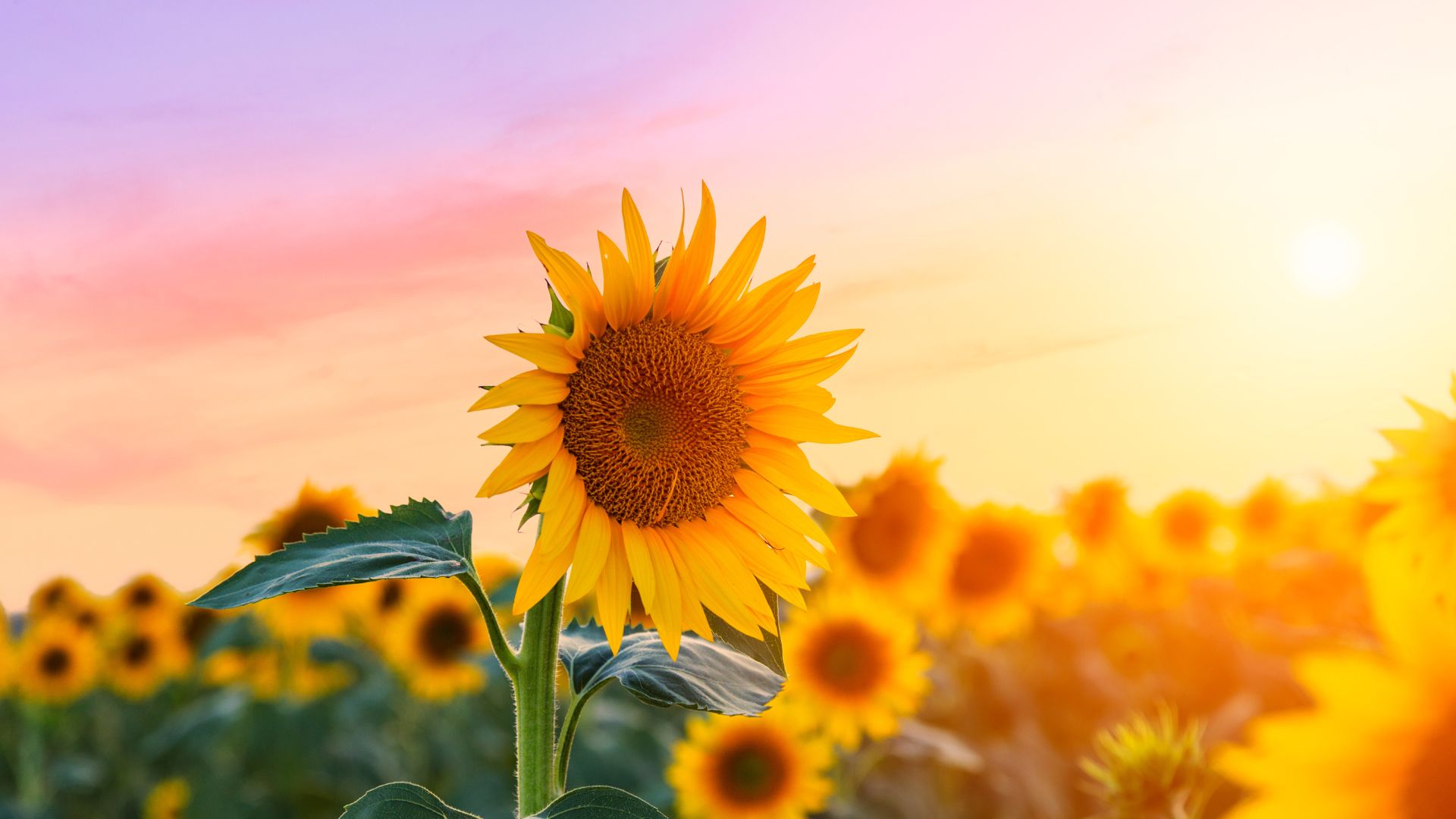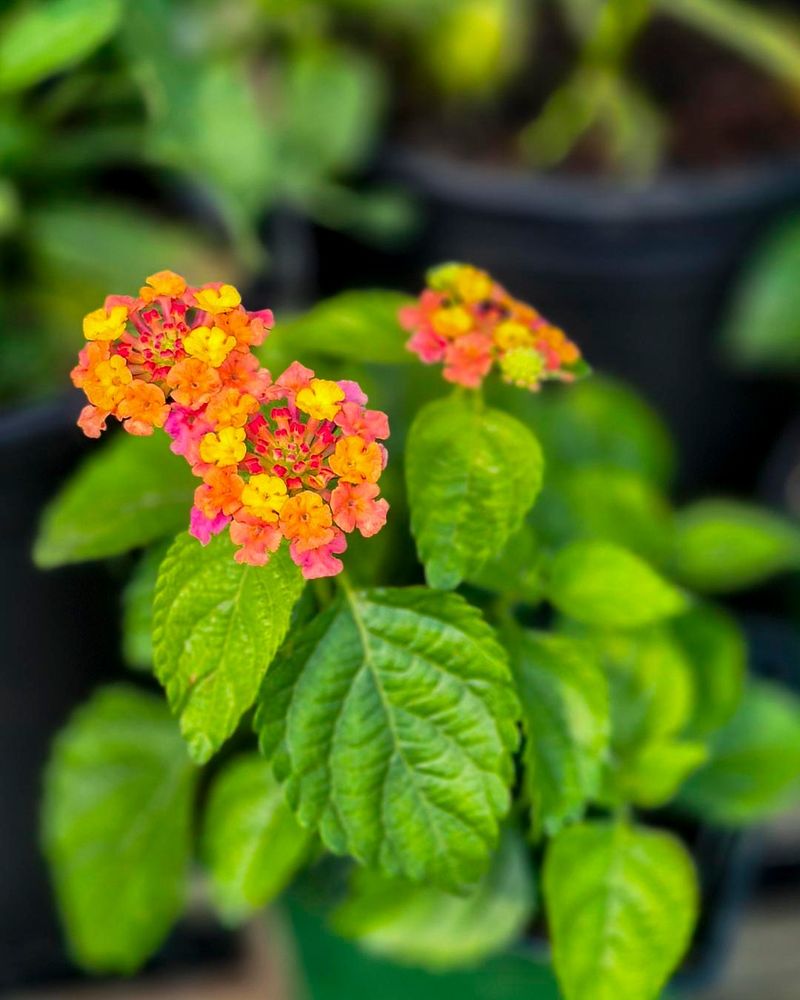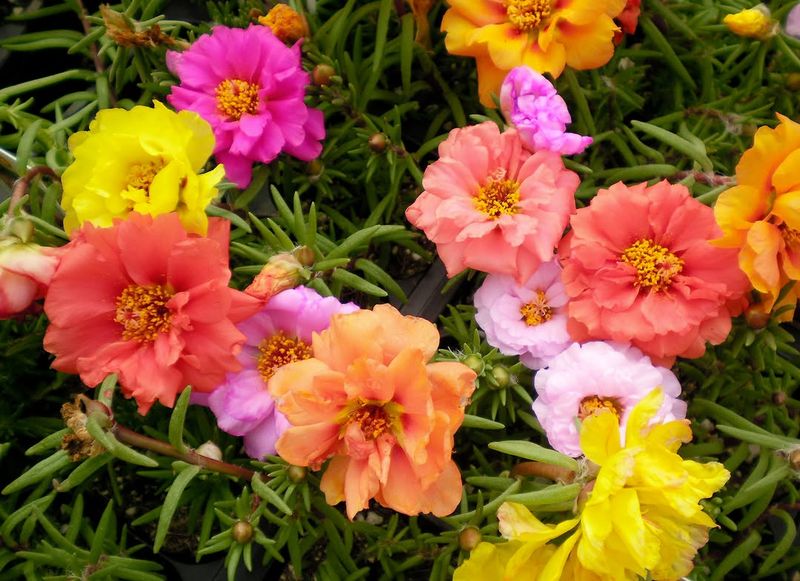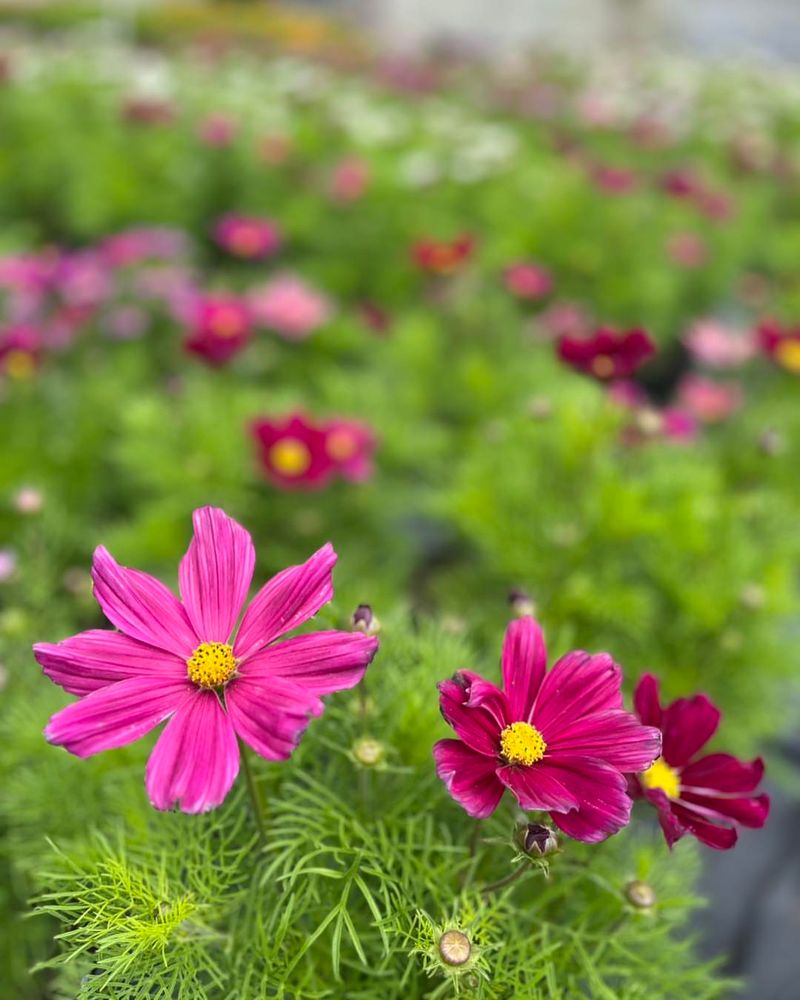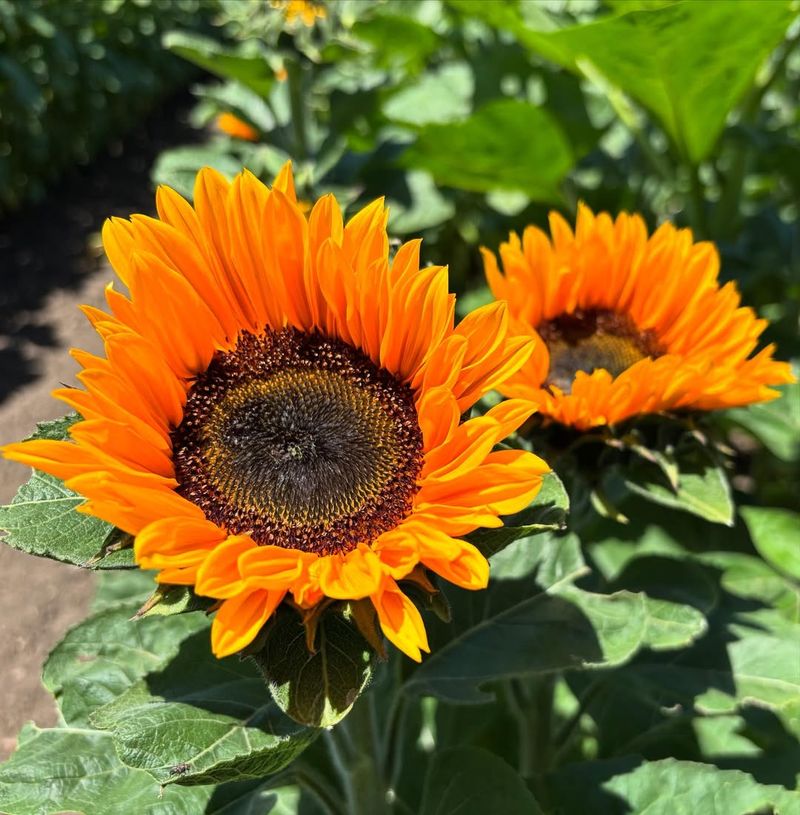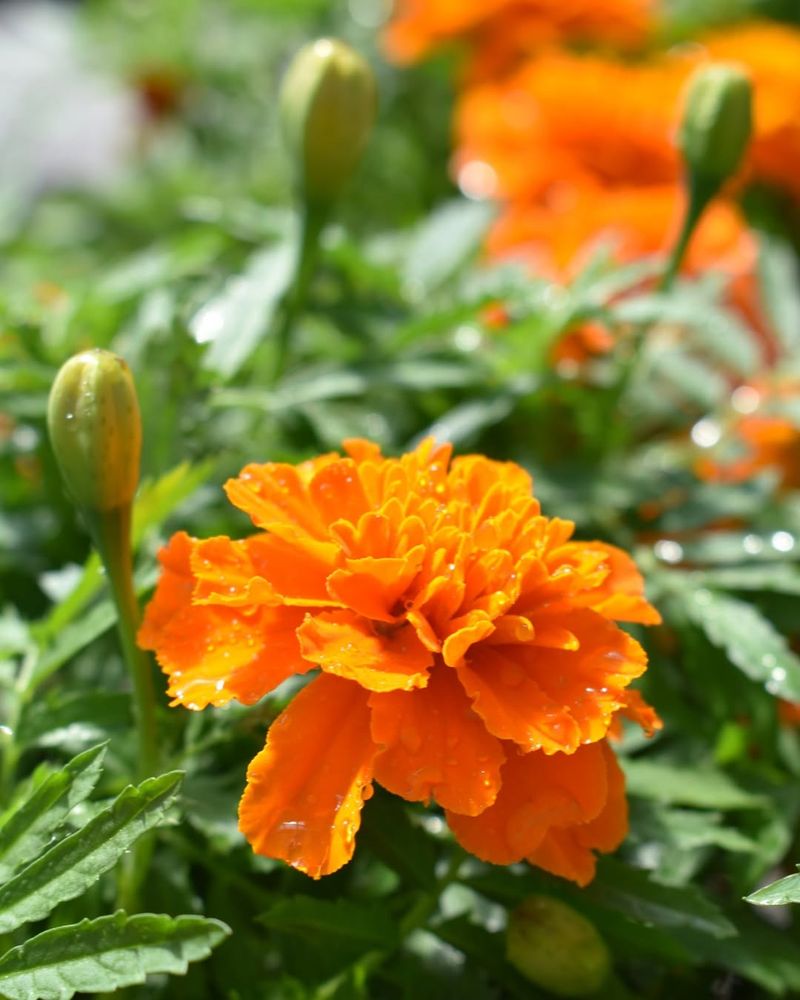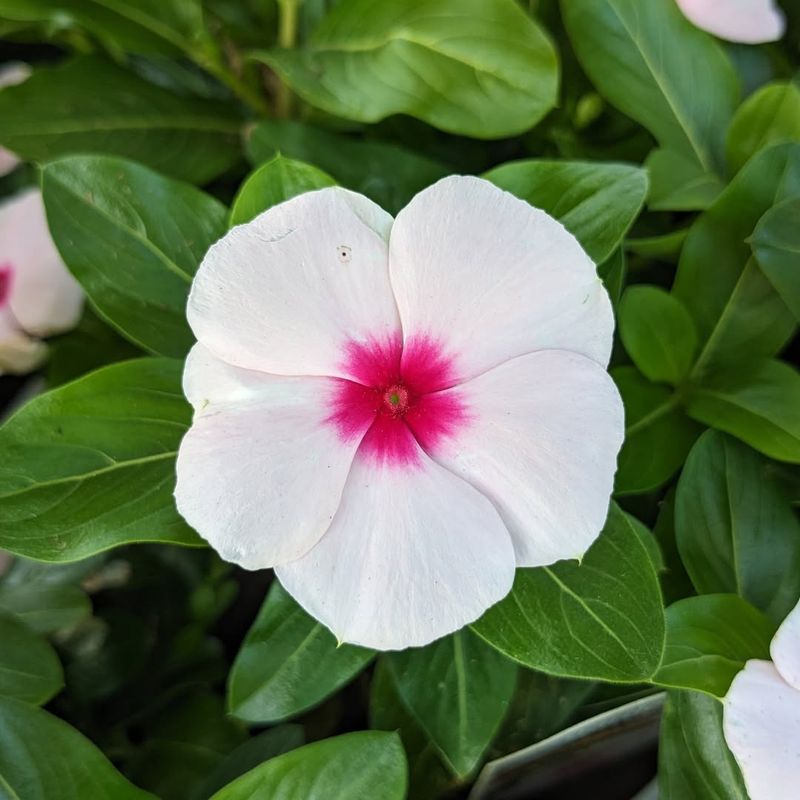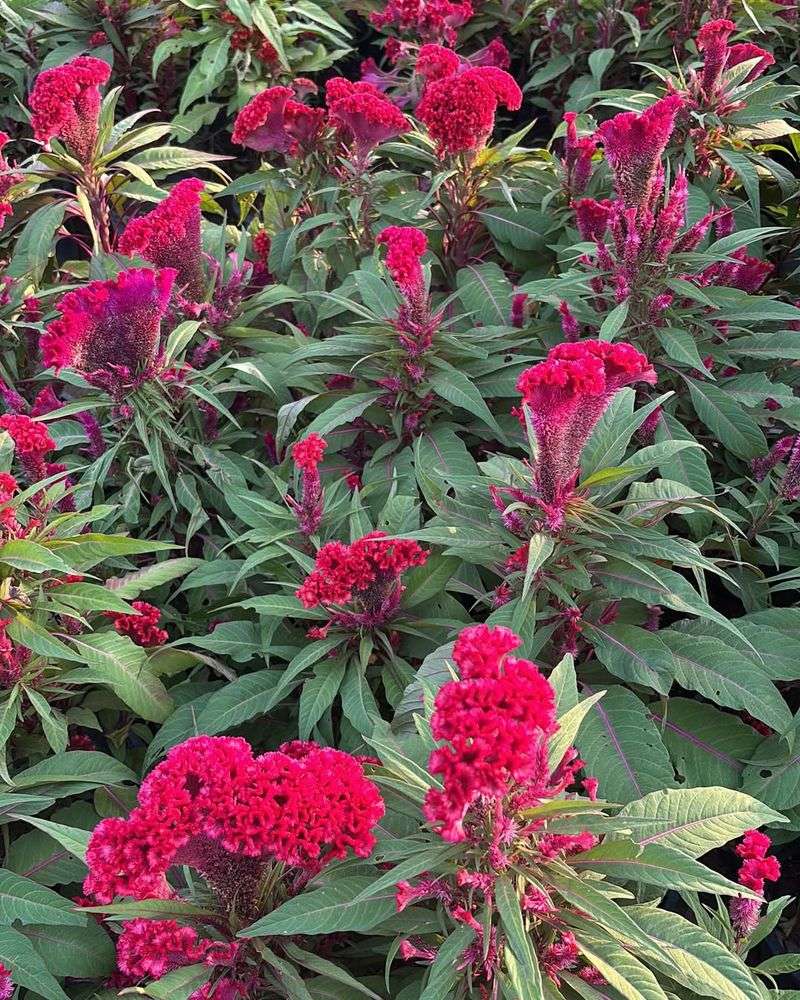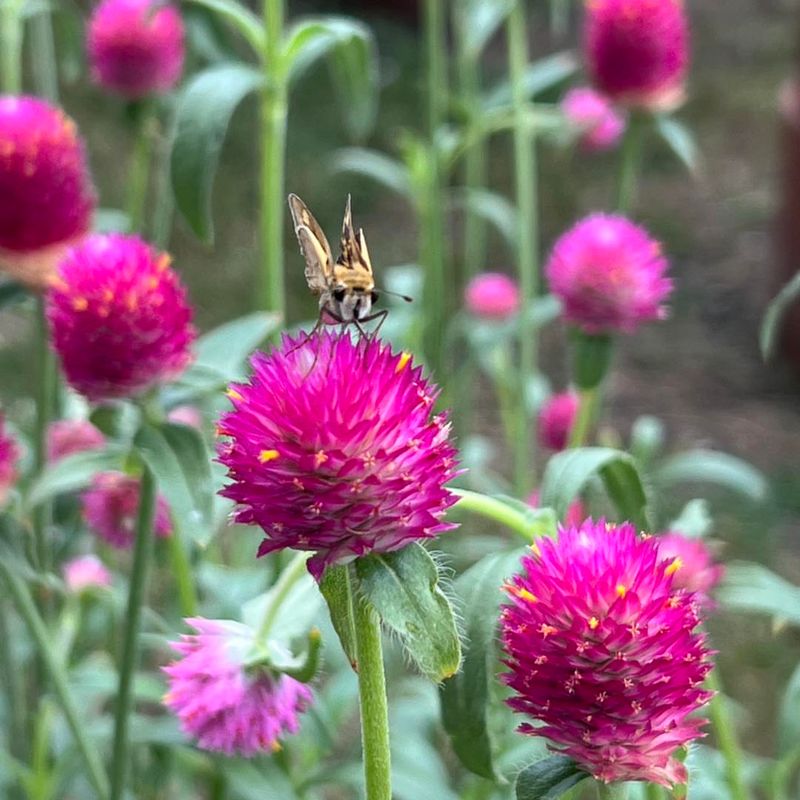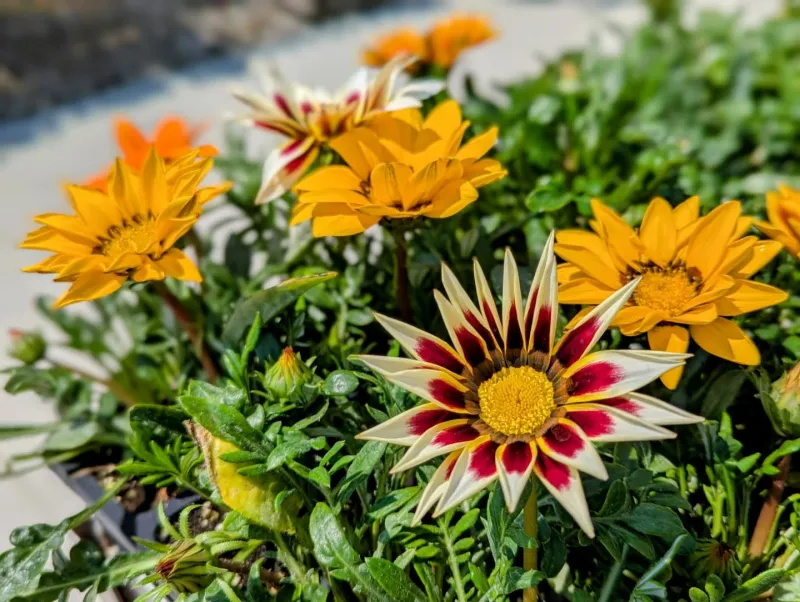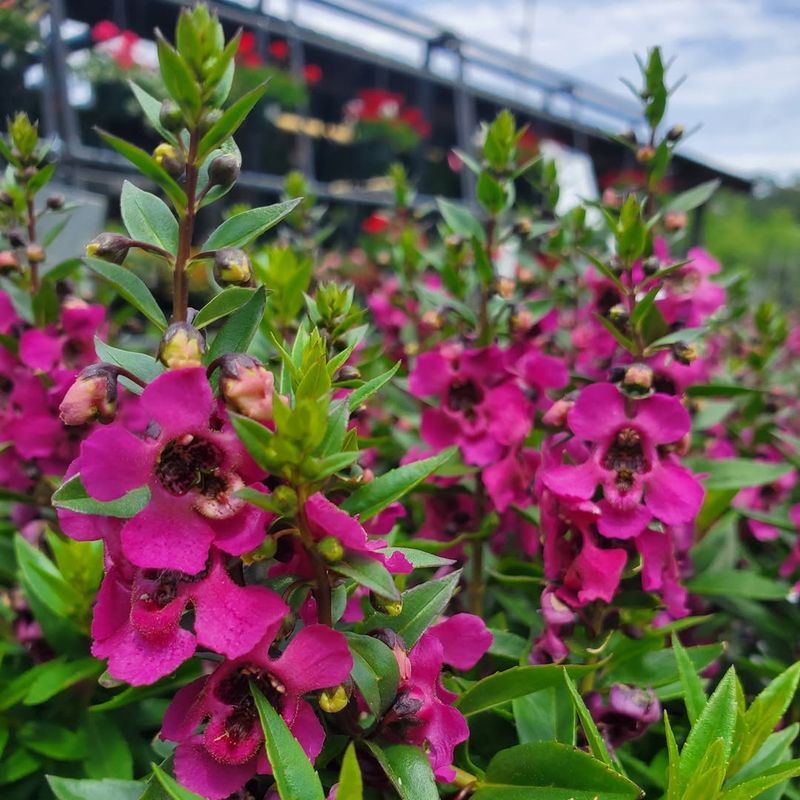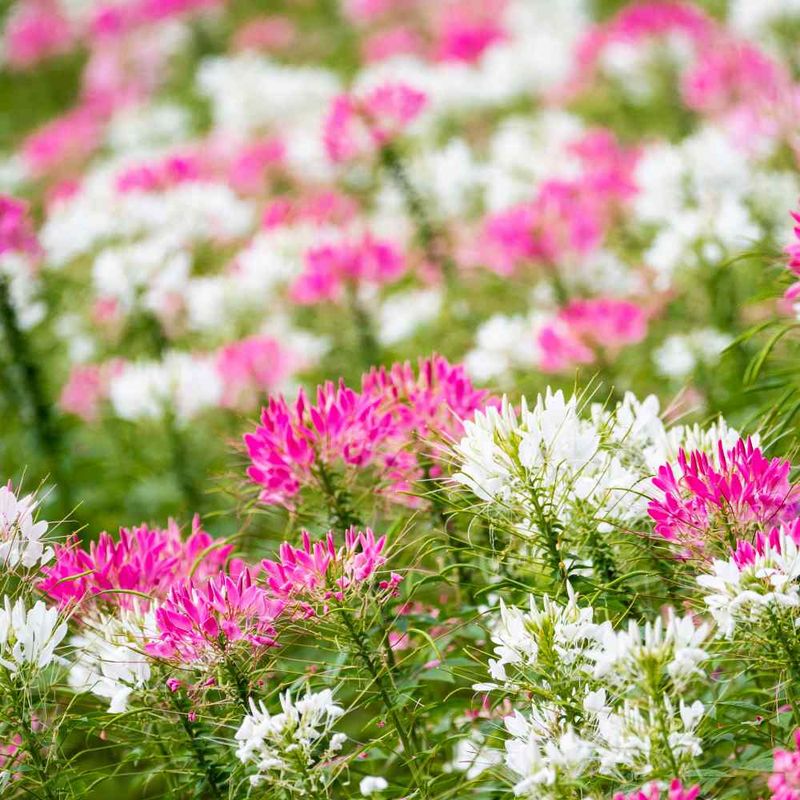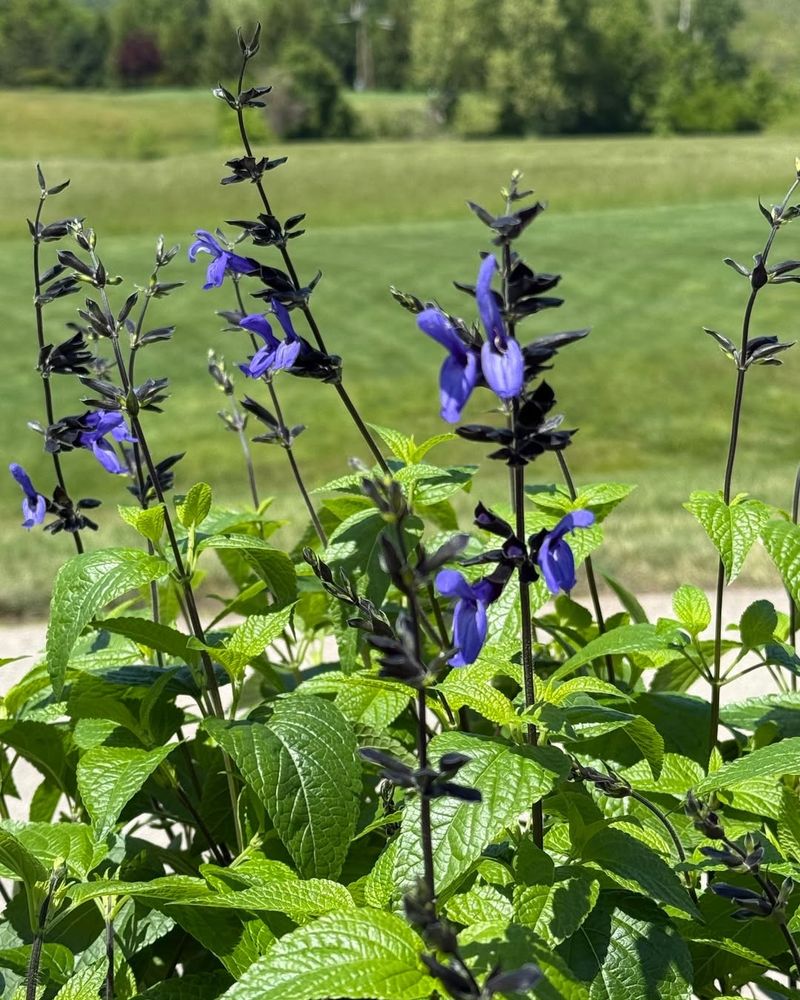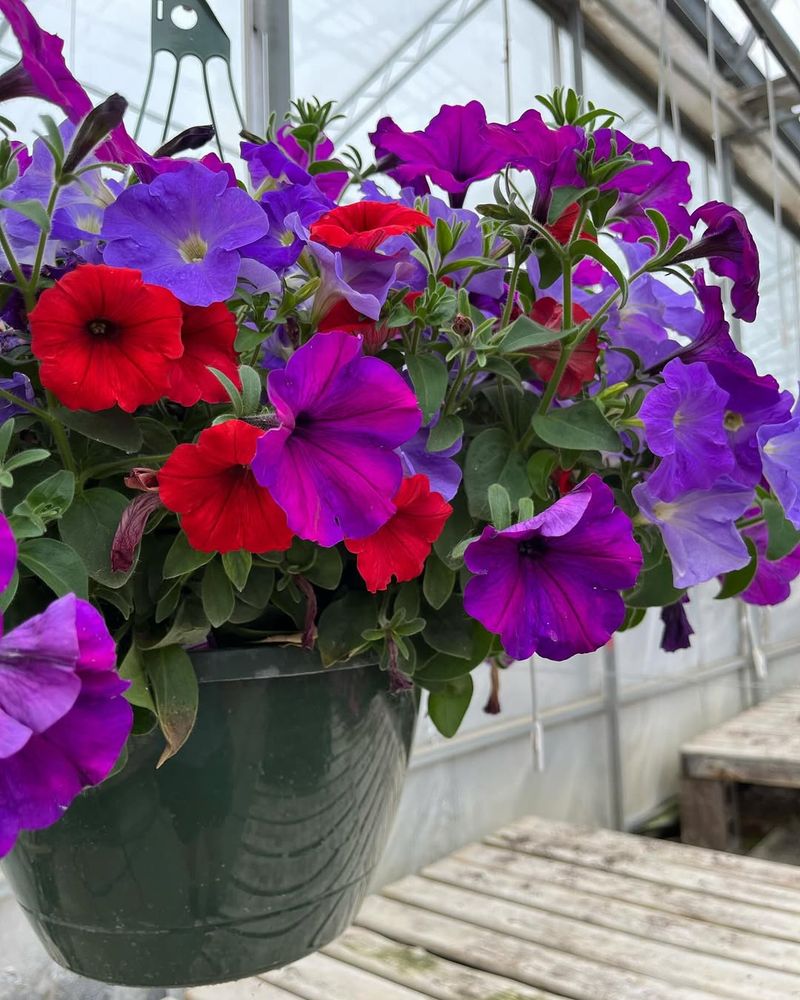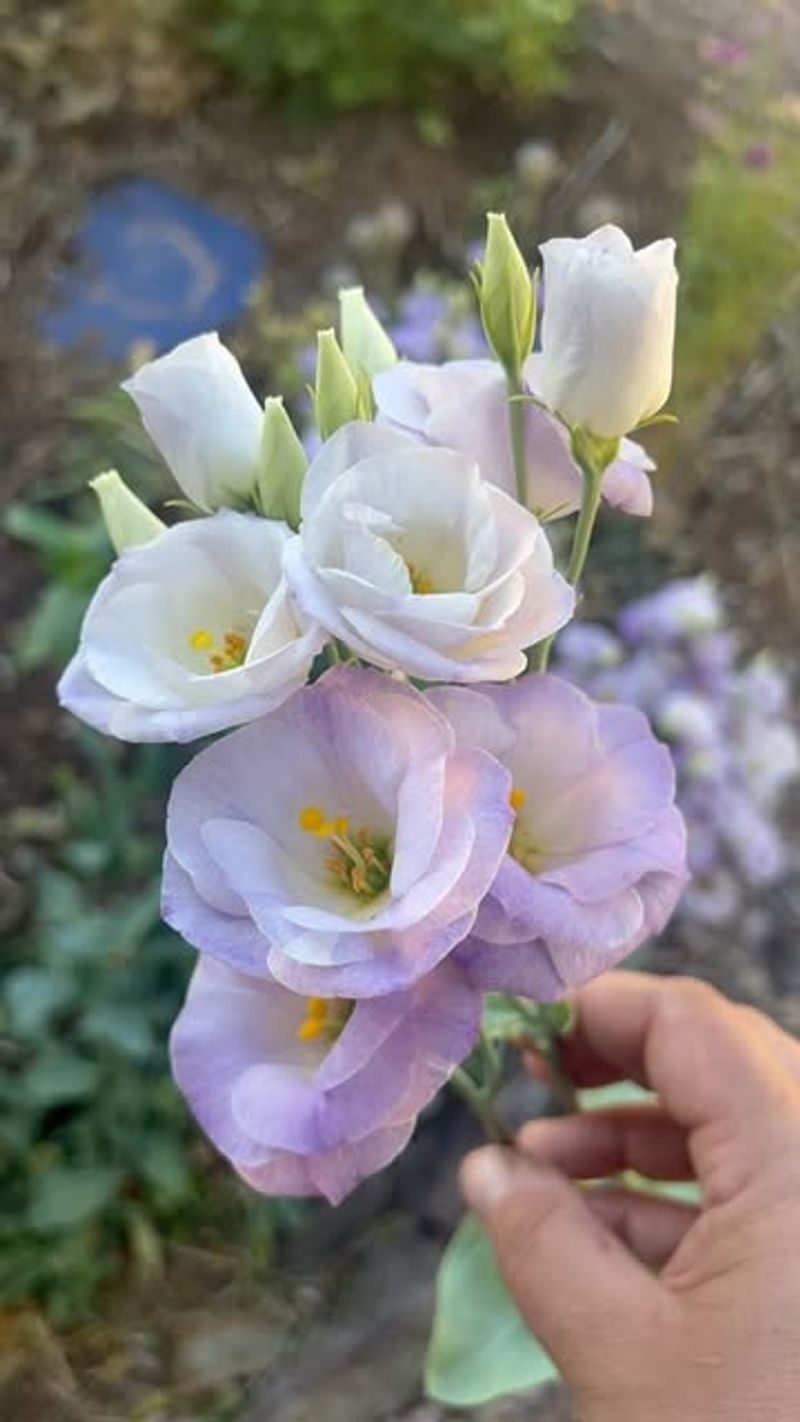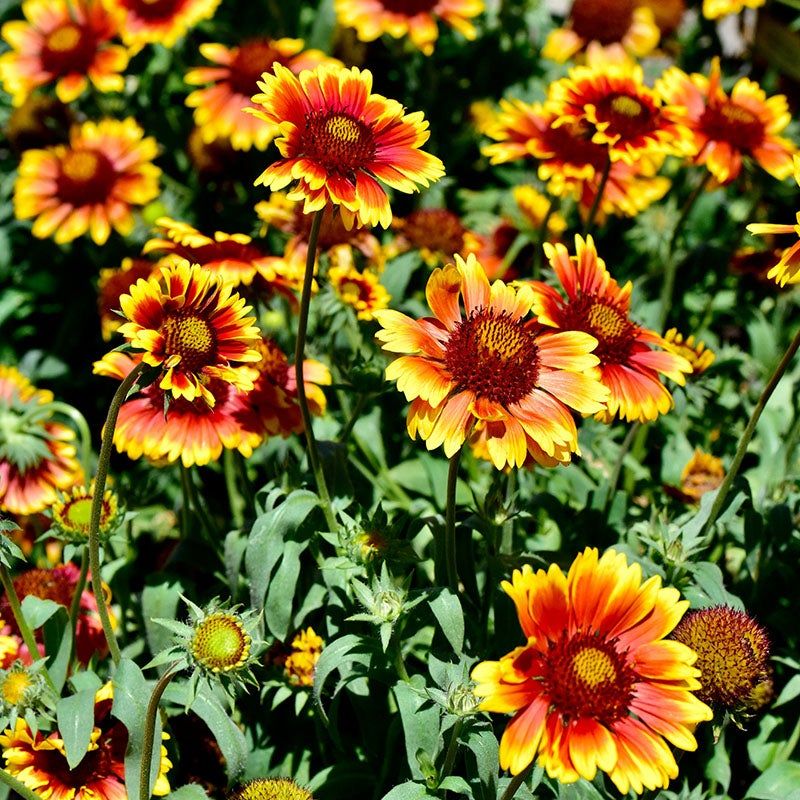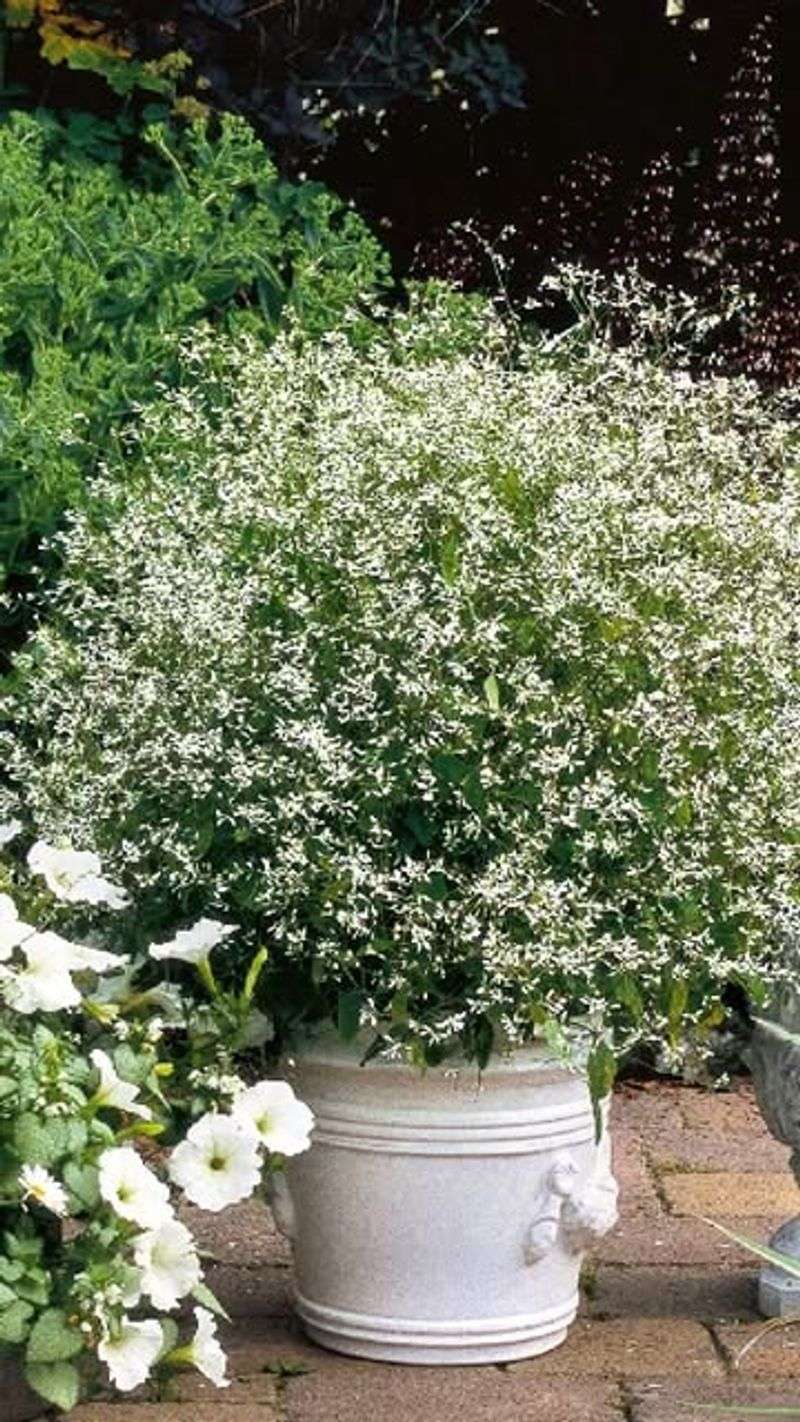When the heat kicks in and other plants start to droop, I always count on my go-to heat-loving annuals to keep the garden going strong. They don’t flinch when the sun blazes—they just keep blooming.
Over the years, I’ve found a few favorites that thrive through scorching afternoons without missing a beat. These tough yet beautiful flowers save my summer garden from looking tired.
If you’re tired of replanting or watching blooms fade by July, these resilient annuals might be exactly what your garden needs to stay lively all season long.
1. Zinnia
Native to hot regions of Mexico, zinnias laugh in the face of summer heat. Their daisy-like flowers come in nearly every color except blue, with sizes ranging from dwarf varieties to towering 4-foot specimens.
Water them at the base to prevent powdery mildew. I’ve grown these in my south-facing garden bed where temperatures regularly hit 95°F, and they just keep pumping out flowers without complaint.
For best results, deadhead spent blooms regularly to encourage continuous flowering. They also make excellent cut flowers that last well in arrangements.
2. Lantana
Drought resistance is built into lantana’s DNA, making it perfect for hot, sunny spots. The clusters of tiny flowers create a multicolored effect as they open, with outer blooms often displaying different colors than the center ones.
Butterflies adore lantana, making it a hotspot for pollinators. Last summer, my lantana patch became the neighborhood butterfly gathering place, even when temperatures climbed above 100°F.
Plant it in well-draining soil and avoid overwatering. Once established, it practically takes care of itself through the hottest days of summer.
3. Portulaca (Moss Rose)
Succulent leaves give portulaca exceptional drought tolerance, storing water for hot periods. The rose-like blooms open in sunshine and close at night or on cloudy days, giving this plant its common name.
Low-growing and spreading, it creates a beautiful carpet of color in rock gardens or along pathways. My containers of portulaca survived a three-week vacation without watering during July – they were still flowering when I returned!
Available in bright pinks, yellows, oranges, and whites, they need minimal care once established. Just provide good drainage and full sun for best performance.
4. Cosmos
Feathery foliage topped with daisy-like flowers makes cosmos both delicate-looking and surprisingly tough. These Mexican natives actually bloom better in poor soil – rich soil produces fewer flowers and more foliage.
Height ranges from 18 inches to over 4 feet, depending on variety. The taller types may need staking in windy areas. After planting them along my driveway in rocky soil, they flourished with almost no attention despite weeks of 90-degree days.
Cosmos self-seed readily, so you might find volunteer plants popping up next year. The ferny foliage adds texture to gardens even before blooming begins.
5. Sunflower
Nothing says summer quite like the cheerful faces of sunflowers tracking the sun across the sky. From dwarf varieties at 12 inches to giants reaching 12 feet, there’s a sunflower for every garden space.
Branching varieties produce multiple blooms per plant, extending the flowering season. The ‘Autumn Beauty’ sunflowers in my side yard kept producing new flowers for over two months straight through the hottest part of summer.
Direct sow seeds after the last frost for best results. Most varieties mature quickly, flowering within 60-90 days of planting, making them perfect for short growing seasons.
6. Marigold
Few flowers match marigolds for sheer heat endurance. Their distinctive scent naturally repels many garden pests, making them functional as well as ornamental in vegetable gardens.
Shorter varieties work beautifully as borders, while taller African marigolds make striking focal points. During last year’s heat wave, when temperatures stayed above 95°F for two weeks, my marigolds continued blooming without missing a beat.
Deadhead regularly to prevent seed formation and encourage more blooms. Colors range from pale yellow to deep orange-red, providing warm tones that complement most garden color schemes.
7. Vinca (Catharanthus roseus)
Glossy, dark green leaves set off the simple five-petaled flowers of vinca, creating an elegant display even in challenging conditions. Unlike its shade-loving perennial cousin, annual vinca craves sunshine and handles drought with ease.
Consistent performers from spring until frost, they maintain their neat appearance without deadheading. When my neighbor’s carefully tended impatiens wilted in July heat, my border of vinca remained picture-perfect without extra watering.
Modern varieties come in white, pink, red, and lavender, often with contrasting centers. They resist disease and require minimal maintenance once established in the garden.
8. Celosia
Flamboyant flower heads in flame-like plumes or brain-like forms make celosia a conversation starter in any garden. Their unusual textures add interest to both garden beds and containers.
Heat and humidity only make celosia happier – they flourish when other annuals struggle. My patio containers of celosia maintained their bright colors through August, even positioned on heat-reflecting concrete.
Colors include fiery reds, oranges, yellows, and pinks. The flowers hold their color well even when dried, making them excellent for cutting and preserving for fall and winter arrangements.
9. Globe Amaranth (Gomphrena)
Clover-like blooms on slender stems dance above the foliage of globe amaranth, creating a delicate appearance that belies their toughness. These button-shaped flowers retain their color for weeks, even in extreme conditions.
A favorite for dried arrangements, the blooms can be harvested and hung upside down to preserve their shape and color. After forgetting to water them during a weeklong heatwave, I was amazed to find my gomphrena not only surviving but producing new buds.
Heights range from 1-2 feet, making them versatile for borders and containers. The most common colors are purple, white, and pink.
10. Gazania
Daisy-like flowers with striking color patterns open wide in sunshine and close at night or on cloudy days. Silver-gray foliage adds to gazania’s appeal and hints at its drought-tolerance credentials.
Low-growing mounds reach only about 8-10 inches tall but spread to create colorful ground cover. In my front border, gazanias survived a broken sprinkler head during a three-week dry spell – they were thirsty but bounced back immediately after watering.
Flowers feature contrasting rings or spots of color, often with dark centers. Orange, yellow, pink, and white varieties are commonly available, all with the same exceptional heat resistance.
11. Angelonia
Sometimes called ‘summer snapdragon,’ angelonia produces spikes of delicate flowers resembling miniature orchids. Unlike many spike-flowering plants, it doesn’t need deadheading to keep blooming continuously.
Remarkably disease-resistant and unbothered by humidity, it’s perfect for challenging summer conditions. My angelonia has flourished in a spot where the house reflects additional heat onto the garden bed – temperatures there must reach well over 100°F on summer afternoons.
Growing 18-24 inches tall, angelonia works well in containers or as a mid-height border plant. Flowers come in purple, blue, pink, and white, attracting butterflies throughout the season.
12. Cleome (Spider Flower)
Dramatic height and unusual flower form give cleome presence in the back of flower borders. The spidery blooms with long, protruding stamens create an architectural effect that draws attention.
Self-seeding enthusiastically, one planting may provide volunteers for years to come. After discovering cleome’s heat tolerance, I added it to my south-facing border where it towers over shorter companions, creating a stunning backdrop.
Flowers appear in shades of pink, white, and lavender on plants reaching 3-5 feet tall. Small thorns on the stems mean you’ll want to position them where they won’t be brushed against frequently.
13. Salvia (Annual Sage)
Spikes of tubular flowers attract hummingbirds and butterflies to this heat-loving annual. Annual salvias typically bloom earlier than perennial types and continue flowering through summer’s worst heat.
Compact varieties work well in containers, while taller types create vertical interest in borders. I’ve planted red salvia alongside my vegetable garden, where it serves double duty – beautifying the space while attracting pollinators to my tomatoes and peppers.
Red is the most common color, but look for newer varieties in blue, purple, pink, and white. Most reach 12-24 inches tall with a neat, mounded growth habit.
14. Petunia (Heat-tolerant Varieties)
Modern petunia breeding has produced heat-tolerant varieties that continue flowering through summer. Look specifically for series like ‘Wave,’ ‘Supertunia,’ and ‘Tidal Wave’ for the best hot-weather performance.
These improved petunias recover quickly from rainstorms without the meltdown older varieties experienced. My hanging baskets of Wave petunias have outperformed all other flowers in containers, even when positioned on a west-facing porch that bakes in afternoon sun.
Available in every color except true blue, with patterns including stripes, stars, and picotee edges. Many have a light fragrance that’s most noticeable in the evening.
15. Lisianthus
Rose-like blooms on slender stems give lisianthus an elegant, almost cut-flower-shop quality in the garden. Though slow-growing initially, once established, they handle heat beautifully while continuing to produce their sophisticated flowers.
Single, double, and ruffled flower forms add to their charm. After discovering their heat tolerance by accident when a garden center had them displayed in full sun, I’ve made them a staple in my summer cutting garden.
Colors include white, pink, lavender, purple, and bicolors, all with the same delicate appearance. Stake taller varieties to prevent stems from bending under the weight of the blooms.
16. Gaillardia (Blanket Flower)
Daisy-like flowers with fiery red and yellow patterns give gaillardia unmatched color intensity in the summer garden. Though some varieties are perennial, annual types bloom more quickly from seed, flowering the first season.
Native to North America’s hot, dry plains, they naturally thrive in challenging conditions. The gaillardia in my roadside garden receives reflected heat from the asphalt yet continues producing cheerful blooms throughout the hottest months.
Growing 12-18 inches tall, they work well in containers or borders. Deadheading extends the bloom time, though they’ll continue flowering even if you neglect this task.
17. Euphorbia ‘Diamond Frost’
Cloud-like masses of tiny white flowers create a misty effect that complements any garden color scheme. This relatively new introduction has rapidly become a garden favorite for its exceptional heat and drought tolerance.
Growing about 12-18 inches tall and wide, it makes an excellent filler in containers or garden beds. My container arrangements always include ‘Diamond Frost’ now – it keeps performing when other plants falter in August heat.
The flowers aren’t actually flowers but modified leaves called bracts, which explains their incredible staying power. Unlike many white flowers that brown in heat, these remain pristine throughout summer.

